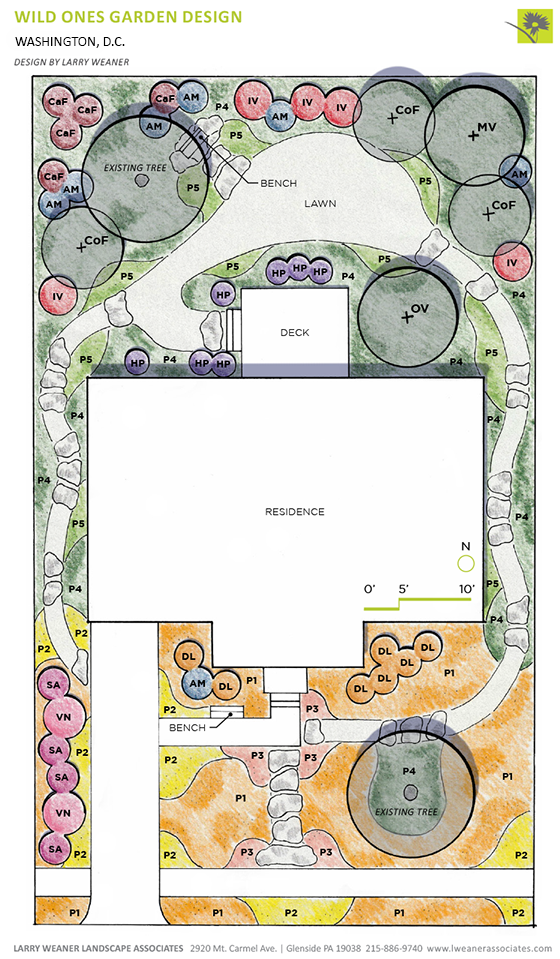
Printing note: This design was created to be 8.5″ x 14″ and the design pdf will print best on legal size paper.
Wild Ones Meet the Designer Webinar
Discussion with Designer Larry Weaner
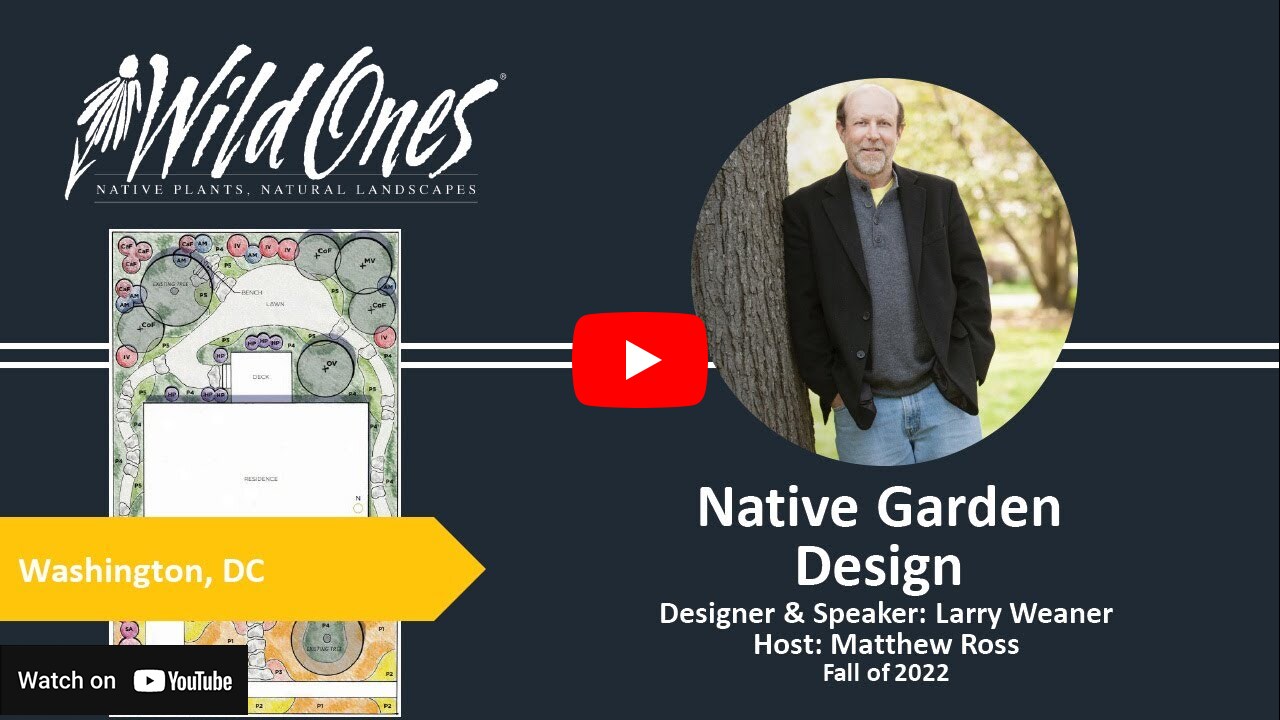
Methodology
When beginning a project, knowing your ecoregion is key. An ecoregion is defined by the geography and ecology of a place and can provide great insight to site characteristics and plant assemblages that may be present. This can guide you in understanding your site as well as referencing plant communities to inspire your design. Depending on your location in the D.C./Virginia area, you can reference the following ecoregions: Piedmont Uplands, Rolling Coastal Plains, or Northern Inner Piedmont. For this garden design, only plant species native to the state of Virginia are used.
The next question to ask is what is the local context in relation to habitat. Is the project near preserved forest and lacks open grasslands? Is the project near mostly open lands and lacks forest? Does the area lack shrublands? This can guide you in deciding how to increase habitat types in your area and/or create connectivity.
When thinking through scale of the project, there are different strategies and styles. For large-scale natural areas, seed is typically the main strategy for planting because the goal is to establish native cover over a large area. Seed mixes are created with flexibility to allow for species to naturally sort themselves in the landscape. For small scale garden projects, planting with container grown and balled and burlapped (b&b) plants is typically the main strategy so that the designer has control of where each plant goes. The designer can use plants to frame or screen views and highlight trees or elements in the landscape. This results in a more stylized and refined version of a native plant community.
Site Analysis
Any design should be informed by an understanding of existing site conditions. During the site analysis phase of a project, various components are analyzed, such as solar exposure, soils, topography, hydrology, existing vegetation, circulation, and surrounding context. In the suburban environment, you may be more likely to encounter disturbed soils and non-native vegetation.
Soil samples are recommended and can be sent to your local laboratory (most state universities provide affordable soil testing through the Cooperative Extension program). Soil texture and pH greatly informs the appropriate plant palette for your project. For this design, selected plants tolerate a range of pH and soil types as well as periods of inundation and drought.
Undesirable vegetation identification is important in shaping site preparation strategies for new plantings. For more problematic undesirable species, the site preparation timeline may be extended in order to adequately control the species. Research the species as it relates to timing and removal strategies. Examples of problematic exotic species in the D.C./Virginia area include Japanese Honeysuckle, Japanese Stiltgrass, Mugwort, Norway Maple, Porcelain-Berry, Oriental Bittersweet, and Tree-of-Heaven.
Design
This design features 3 major habitat types: a wildflower meadow and shrubland in the front yard and a woodland in the rear yard. There are a selection of trees and shrubs that suit small spaces as well as multiple herbaceous combinations. Each species fulfills a role in the garden (groundcover, structure, flowers, seasonality, etc.). Both clonal shrubs (Spiraea alba) and clump forming shrubs (Viburnum nudum) are included in the shrubland. Clonal shrubs are highly weed suppressive and have high wildlife value due to their dense stems. Clump forming shrubs are used for framing and screening. For herbaceous combinations, percentage and spacing are provided so that this design can easily be applied to spaces of any size.
Only straight species are specified for this design to create as much genetic diversity as possible in this garden. Cultivars are genetically identical because they are bred either from seed collected from a natural population showing a unique characteristic or by selectively breeding for a particular trait. While cultivars may be more easily available in the nursery trade, it is worth doing research to find nurseries that grow straight species. Genetic diversity is important because it increases the ability for a population to respond and evolve to changes in the environment.
Installation & Phasing
Site preparation can be mechanical (sod skimming, etc.) or chemical (conventional or organic herbicides). Site preparation is critical to the long term success of the future plantings. Decide methodology and allow for adequate timing for site preparation to be performed.
To reduce irrigation during the establishment period, install plants during the spring and fall. Monitor for signs of drought stress and water as necessary during the establishment period only. Long-term irrigation and fertilizer is not recommended because plants are selected for the site conditions.
Layout plants at the specified spacing. Use the plan and plant list to guide you on layout as some species are laid out as a matrix, scattered, or grouped. Plants laid out as a matrix provide the foundation for all other plantings. Plants scattered and grouped through the garden provide interest and structure.
Phasing can be broken out by focusing on either the front yard (meadow and shrubland) vs. rear yard (woodland), woody vs. herbaceous plants, or hardscape vs. plantings. Generally hardscape materials should be installed prior to any planting to limit disturbance of the new gardens and woody plants should be installed prior to herbaceous plants. In this design, the path can be a shade tolerant fescue blend, crushed stone, or flagstone steppers depending on the clients budget and aesthetic preferences. Use local or re-purposed materials to reduce carbon footprint.
Management
Care for a garden reduces as the plants mature and become more densely interwoven and resistant to weed invasion. Key tasks for management are:
- Monitoring for and controlling problem weeds throughout the growing season.
- Cutting back the prior year’s residual herbaceous growth to the base in March. Some stem stubble can be left if desired for use by stem-nesting insects.
- Applying mulch to areas of bare soil in spring. Do not mulch deeper than 2 inches.
- Gently redistributing any thick fall leaf deposits so that they do not smother plant crowns.
Benefits Of Native Gardens
Native gardens create numerous benefits locally and regionally. Native gardens are sources of habitat for wildlife. They are banks for carbon and biodiversity. Native gardens can reduce lawn, which then reduces fuel, labor, and chemical inputs. As it relates to humans, native gardens are an opportunity for education and provide beautification.
PLANT LIST
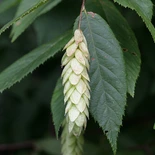
American Hophornbeam(Ostrya virginiana)
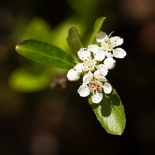
Black Chokeberry(Aronia melanocarpa)
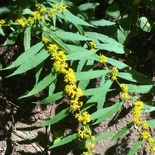
Blue-Stemmed Goldenrod(Solidago caesia)
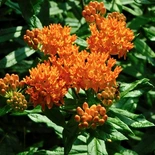
Butterfly Weed(Asclepias tuberosa)
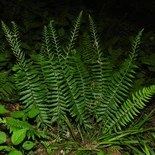
Christmas Fern(Polystichum acrostichoides)

Creeping Phlox(Phlox Subulata)

Dwarf Bush Honeysuckle(Diervilla lonicera)

Flowering Dogwood(Cornus florida)

Foam Flower(Tiarella cordifolia)
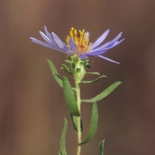
Fragrant Aster(Symphyotrichum oblongifolium)

Fringeleaf Wild Petunia(Ruellia humilis)

Golden Alexanders(Zizia aurea)

Golden Groundsel(Packera aurea)
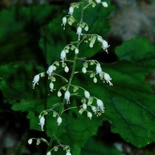
Hairy Alumroot(Heuchera villosa)
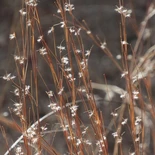
Little Bluestem Grass(Schizachyrium scoparium)

Meadowsweet(Spiraea alba)

Moss Pink(Phlox subulata)
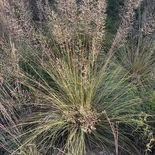
Northern Dropseed(Sporobolus heterolepis)

Northern Lady Fern(Athyrium angustum)
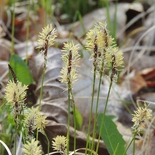
Pennsylvania Sedge(Carex pensylvanica)
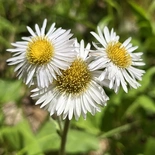
Robin's Plantain(Erigeron pulchellus)
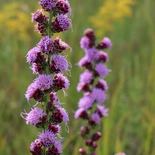
Rough Blazing Star(Liatris aspera)
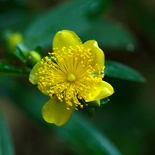
Shrubby St. John's Wort(Hypericum prolificum)

Slender Mountain Mint(Pycnanthemum tenuifolium)
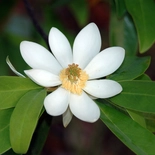
Sweetbay Magnolia(Magnolia virginiana)
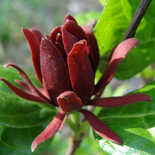
Sweetshrub(Calycanthus floridus)
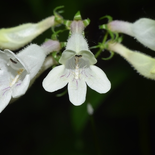
White Beardtongue(Penstemon digitalis)
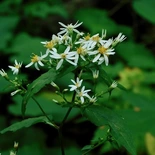
White Wood Aster(Eurybia divaricata)
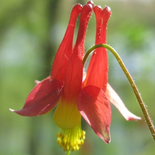
Wild Columbine(Aquilegia canadensis)

Winterberry(Ilex verticillata)
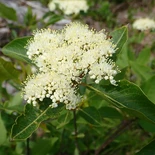
Witherod Viburnum(Viburnum nudum var. cassinoides)
ABOUT THE DESIGNER

Larry Weaner, a Wild Ones Honorary Director, received his Associates degree in Ornamental Horticulture from Pennsylvania College of Technology. He founded Larry Weaner Landscape Associates in 1982 and gained a national reputation for combining ecological restoration with garden design traditions. In 2008 he received the top three design awards from the Association of Professional Landscape Designers, and his work has been profiled in many regional and national publications. An active guest lecturer for horticultural and environmental organizations throughout the U.S, he developed New Directions in the American Landscape, a conference series dedicated to advancing the art and science of natural landscape design.
Growing the Native Plant Movement Together
July 22nd at 5:00 PM (CDT)
The closing event of this year’s Less Lawn More Life Challenge, will be led by Lisa Olsen, Chapter Liaison at Wild Ones. In this webinar, you’ll learn how small, personal actions like planting native species and removing invasives, can ripple outward to inspire neighbors, change policies, and reshape communities.
About Wild Ones
Wild Ones (a 501(c)(3) nonprofit organization) is a knowledgeable, hands-on, and supportive community focused on native plants and the ecosystem that depends on them. We provide resources and online learning opportunities with respected experts like Wild Ones Honorary Directors Doug Tallamy, Neil Diboll, and Larry Weaner, publishing an award-winning journal, and awarding Lorrie Otto Seeds for Education Program grants to engage youth in caring for native gardens.
Wild Ones depends on membership dues, donations and gifts from individuals like you to carry out our mission of connecting people and native plants for a healthy planet.
Looking for more native gardening inspiration? Take a peek at what our members are growing!
